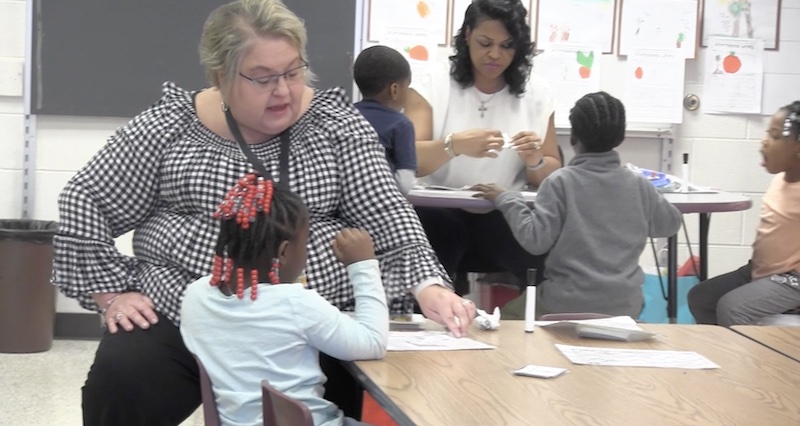With a decade of successful implementation behind us, here’s one thing we know: Opportunity Culture®strategic staffing is long past the pilot phase.
Studies show the power of Opportunity Culture®roles and teaching teams, along with our own continual data tracking. That research and data focuses us on a key to success for 2024–25: reaching all students with Multi-Classroom Leadership™ teams.
When districts commit to spreading these teams throughout schools and the entire district within a few years, rather than just piloting the teams in a few grades or schools, students reap the benefits—and as we’ll keep saying, kids can’t wait.

Schools that use these staffing models and achieve high student learning growth:
- adhere to the five Opportunity Culture®principles of school staffing design
- reach all students with Multi-Classroom Leadership™ (MCL™) teams
- and have school leaders who ensure that the team roles are clearly defined and connected to student learning.
Read the first in this series: Because Kids Can’t Wait: Follow 5 Crucial Strategic Staffing Principles
To reach all students, schools create teaching teams throughout a school led by a proven educator in the MCL™ role, who leads a small teaching team, providing guidance and frequent on-the-job coaching while continuing to teach part of the day. Those teams include Team Reach Teacher™ roles and Reach Associate™ paraprofessional roles, to reach all students with excellent instruction, even in the face of teacher shortages. Importantly, these roles all receive more pay, and they make increased small-group teaching and tutoring possible. In most schools, this team structure means every student can have at least 90 minutes of adult-led small-group teaching or tutoring weekly.
For example, we are seeing that Title I schools with more of these paid roles on each team are more likely to make high-growth learning schoolwide than those with just a team leader role. Annual surveys show that educators with higher-paid roles are happier, too.
There are two areas in which we are in a pilot phase—excitingly so!
To make going schoolwide even more feasible, Public Impact® is refining our original concept for a Remotely Located Multi-Classroom Leader® role, so schools can reach more students when facing a shortage of team leaders in a grade or subject. We’re excited to work with The Innovation Project (TIP) and five North Carolina districts designing their use of Opportunity Culture®models, which includes an option to pilot the remotely located role with other districts in the cohort. And we continue working with the school district in Carlsbad, New Mexico, to refine and pilot our early model for a Multi-School Leader™ role, in which excellent principals can extend their reach by leading a small set of schools.
As we head into our second decade, we’ll keep striving for this balance of results plus continued innovation and refinement, based on what we learn from implementing schools—because, you guessed it: Their kids, and all the kids in U.S. schools that have yet to shift to roles like these, can’t wait.
